Oban 14 was the first bottle of single malt Scotch whisky I ever purchased. I must have been 24 or 25 at the time. Shortly before then I had taken my first trip to Europe, which, of course, included a visit to Scotland, and I’m sure it was in one of the many perfect pubs that I acquired a taste for the water of life. It also made sense to graduate to a finer spirit now that my Busch Light- and Old Thompson-fueled college career was in the rearview mirror and I had a paying job.
Still, of all the single malts on store shelves, why Oban? The attractive packaging? The curious teleporting effect of the sound of the name ‘Oban?’ Had I enjoyed a dram and fallen in love with it? Marketing?
There are people who spend their careers hacking the human brain to tap into, stimulate, and understand desires, but I’m not one of them. Suffice to say Oban looms large in the formative years of my appreciation for single malt whisky. It also looms large in the industry, which is a curious thing for, as I was reminded on my second visit, Oban Distillery is a small place.
You can find Oban Distillery in the heart of bustling Oban, a seaside town in the west highlands (Argyll, to be exact) that lies just across the water from the Isle of Mull. Ferries ply the harbor all day long bound for Mull, Colonsay, Lismore, Coll, Tiree, Islay, and others as seagulls circle above the rooftops of the stepped town. It’s an unexpected position for a distillery — most have their origins in illicit stills tucked deep in distant glens — until you learn that it was established in 1794 and the town of Oban grew around it.
John and Hugh Stevenson hailed from nearby Port Appin and built a boat-building yard, tannery, and brewery in this location in 1790. By 1794, the brewery had become Oban distillery. The town grew around the Stevensons’ enterprises and the distillery remained in their family for much of the 19th century. In 1883, J. Walter Higgin purchased the distillery and rebuilt the entire plant in the 1890s. Oban Distillery passed through a rough patch until it became part of Distillers Company in the 1920s. This group, along with others, later became Diageo, one of the leading spirits companies in the world today.
Remember what I said about marketing? Well Oban was one of the original six “Classic Malts” marketed by Diageo starting in the late 1980s. The Classic Malts program is just a marketing campaign that highlights selected distilleries in Diageo’s portfolio, but, being as large as they are, Diageo’s campaigns are highly influential and so a small coastal highland distillery like Oban has received a surprising amount of shine.
Oban Distillery’s building is a handsome beast just up a lane from the harbor, and I was immediately struck by the level of polish on the visitor center. Soft lighting in the shop compels you purchase a bottle while the exhibits upstairs share the romantic tale of Oban’s founding amid mouth-watering descriptions of their whisky.
I arrived with Sarah and our friends from Australia on a drizzly day, and I actually got measured for my Stewart kilt just inside the door of the visitor center (just seemed like a convenient place to meet the kiltmaker). We were booked on the Sensory & Flavour Finding tour, the distillery’s introductory tour, and soon we were off.
I must regretfully report that photos and all electronic devices were forbidden inside the distillery, a stance that neuters my ability to provide in-depth coverage as I rely on photos and audio recordings to tell the distillery’s story. Nevertheless, I soldiered on and resolved to inform the distillery that they are the only ones impacted by this needless rule.
As I mentioned, Oban Distillery is small. There are only two stills in use and they produce around one millions liters of whisky each year. Small as it is and positioned as one of Diageo’s Classic Malts, it was no surprise to learn that all their production goes to single malt bottlings. In fact, you will be hard-pressed to find even independent bottlings of Oban’s whisky. Among its peers, this could be considered a rare whisky. Given where the distillery is located in town, it cannot be expanded, so this is going to be the status quo for the foreseeable future.
Loch Gleann a’Bhearraidh is the water source for the distillery, as it is for the town, and they use 35,000 liters with seven tons of grist per mash. The mash lasts ten hours, and three separate showers of increasingly hot water filter through the ground up barley to dissolve the sugars. Each week sees the distillery perform six or seven mashes, and at the end of each one they siphon 30,000 liters of wort into washbacks. The wort spends four days in the washbacks where yeast converts the sugars into alcohol. At the end of the process they’ve essentially got Oban beer. But what’s better than beer?
Whisky, of course.
The stillhouse is where my notes get hazy since I could not record the guide. After the wash is distilled, it filters through old-school worm tubs tucked up in the roof of the distillery, which must be a one-of-a-kind design.
Oban’s cask management policy was quite interesting. They only use casks that have been used several times previously — no first-fill Sherry butts here. The impact of this decision is that the wood will take longer to impart its essence to the spirit. Perhaps this is why Oban’s base offering is a 14 year old bottle and not a 10 or 12 year old. It’s difficult to know if this is appropriate for Oban’s spirit because of its particular strength or character, or if this is a function of its standing in Diageo’s portfolio. Perhaps the better casks go to other distilleries.
In the warehouse our guide siphoned out a dribble of cask-strength whisky to show why Oban needed to remain in the barrel for 14 years. The whisky was powerful and robust, and frankly I wanted more. The tour ended in a small room connected to the shop with a broad bar and tasting displays decorating the walls. We acquired our Oban 14 drams and it was good, a very fine dram. I couldn’t quiet the niggling voice in my head that declared it liked the cask-strength dram a bit better, though. Oops.
After the tour I went back upstairs to a small bar and ordered a dram of the Oban Distiller’s Edition, the other of Oban’s two standard bottles. Little Bay, a no-age-statement bottle is also available now. The Distiller’s Edition was excellent. The time it spent in the Montilla Fino casks imparted a rich complexity that quickly became my favorite of the Oban expressions. Many of Diageo’s distilleries bottle a Distiller’s Edition, and one and all are excellent drams (they seem to all spend time in Sherry butts, and I like Sherried whiskies).
I wouldn’t go out of my way to schedule a tour at Oban Distillery, but if you’re in the region and the weather turns sour, head for the distillery and you’ll have an enjoyable experience.

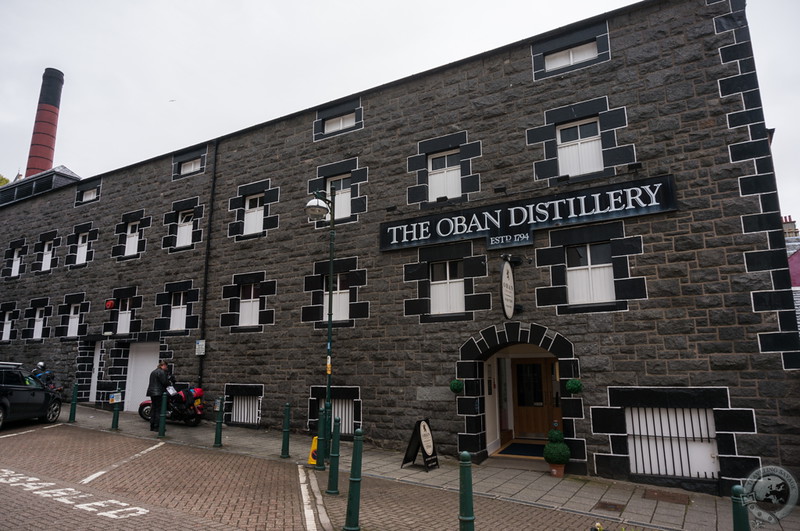
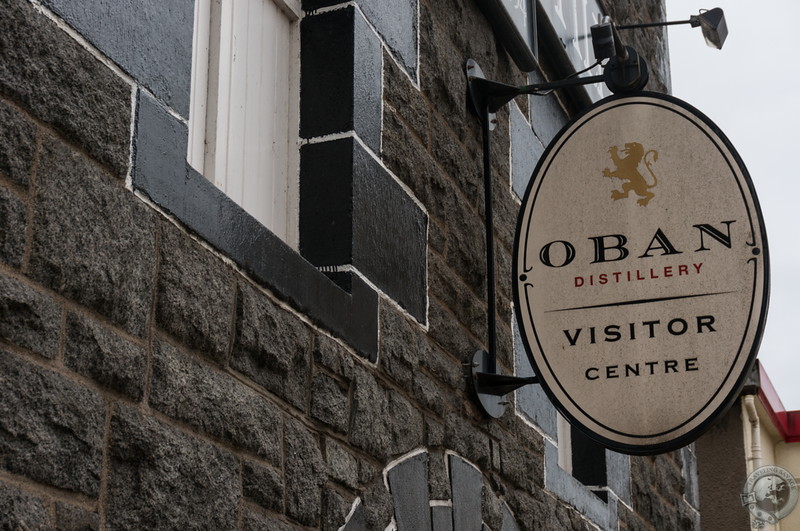
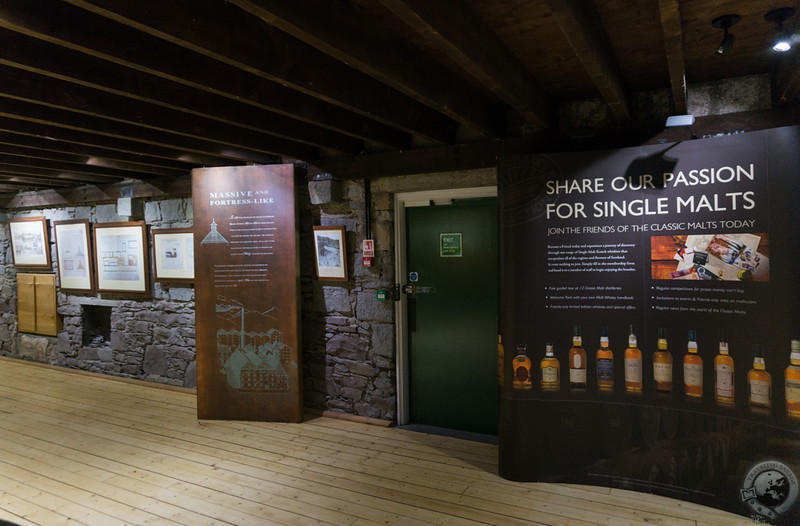
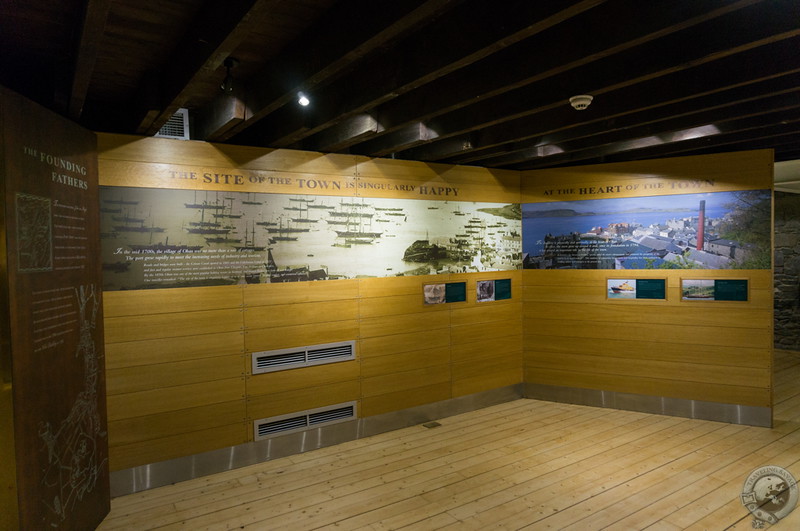
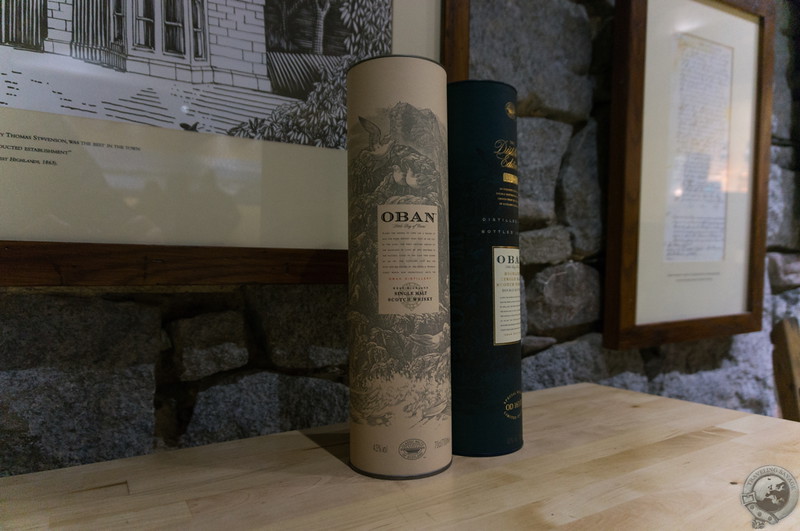
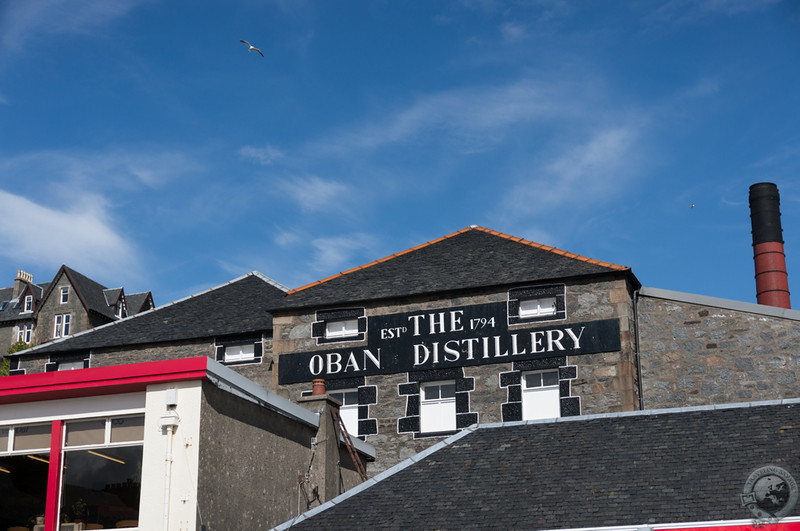
[…] Mull, Lismore, and other islands in the Firth of Lorn. In town, visit McCaig’s Tower and the Oban distillery before grabbing lunch at a place like Cuan […]
[…] of distilleries here. In fact, you will find only one between Talisker on the Isle of Skye and Oban distillery in the town of the same name. It’s in that wide swath of the western highlands called […]